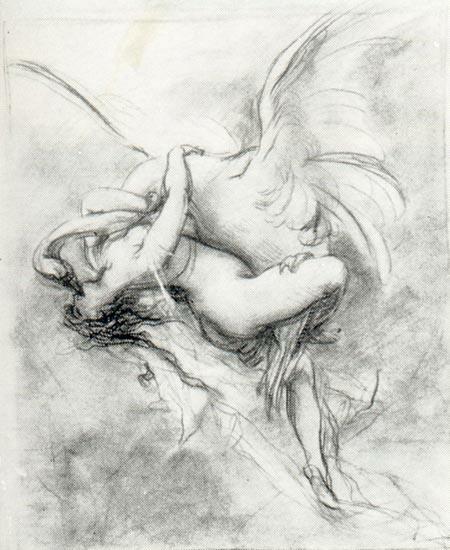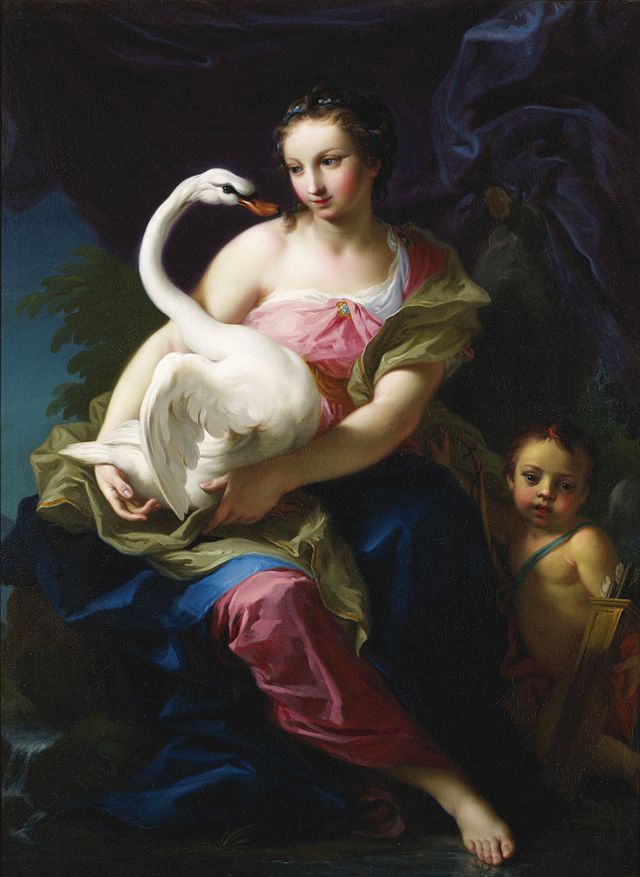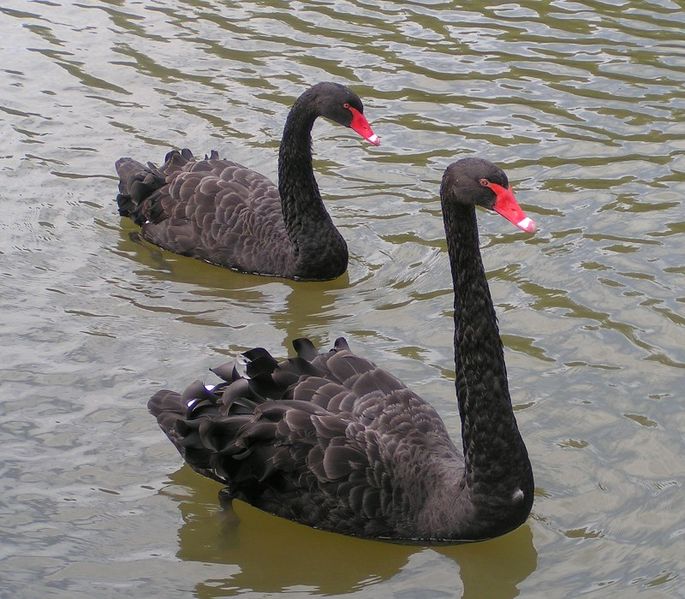
Note: In fact, this is the swansong of Bird of the Month, which has reached its first birthday and is going into retirement (birds age faster than humans.) Thank you to all Toast readers for sharing your bird knowledge, enthusiasm and stories in the comments. I’ve loved reading them. For your perusal, previous Birds of the Month can be found here.
W.B. Yeats first visited Coole Park, the Irish estate owned by his friend Lady Gregory, in 1897. He stayed there regularly over the next couple of decades and in 1916 wrote “The Wild Swans at Coole,” a poem in which the speaker, wandering by a lake in the October twilight, sees that
Upon the brimming water among the stones
Are nine-and-fifty swans.
When he first counted the swans, 19 years ago, he “trod with a lighter tread.” Now, his “heart is sore.” This could be for a number of reasons (World War One, the difficult political situation in Ireland, the recent death of Lady Gregory’s son) but, Yeats being Yeats, it’s a good bet that romantic disappointment is high on the list.
If you are feeling bad about the state of your love life, swans are not the ideal bird to look at. They find their partners young and tend to mate for life. They spend a lot of time gazing into the eyes of their beloveds, touching foreheads gently and preening each other’s feathers.
Eight years later, Yeats considered another aspect of the swan in his sonnet “Leda and the Swan.” This is a retelling of the Greek myth in which Zeus, king of the gods, turns himself into a swan in order to have sex with a young woman named Leda.
A sudden blow: the great wings beating still
Above the staggering girl, her thighs caressed
By the dark webs, her nape caught in his bill,
He holds her helpless breast upon his breast.
Drawing of Leda and the Swan by Maxmilian Pirner (1854-1924)
Leda and the Swan became a popular subject for artists in the Renaissance period, when it was more acceptable to show a woman having sex with a swan than with another man. (As for a woman with a woman/man with a man, no chance.) It continued to be popular over the next four centuries.
Leda and the Swan by Correggio, c.1532
Leda and the Swan by Giambettino Cignaroli, c.1756
Whereas some Renaissance paintings show the Zeus-swan as docile, even pet-like (see above), Yeats leaves the reader in no doubt as to the bird’s strength and capacity for violence. Swans are very strong. Do not rile one at close quarters, because if you get caught up in its angrily flapping wings you might find yourself with a broken arm. Part of the swan’s strength comes from its size. The largest swan species, the trumpeter swan, is the heaviest bird native to North America.
It rivals the great bustard and the dalmatian pelican as the heaviest bird that can fly. (The male of each of the three has an average weight of about 25lb.)
Great bustards and dalmatian pelicans: rivals of the trumpeter swan
There are between seven and nine species of swan. (It is not always possible to tell what counts as a distinct species, or even whether something is truly a swan. These questions occupy ornithologists and taxonomists, but need not delay us here.)
The most widespread species is the mute swan, which is native to northern Europe and Asia. In the late 19th century it was introduced to North America, where it has lived happily ever since. You can recognise the mute swan from the pronounced black knob at the top of its orange beak.
Most swan species (mute, trumpeter, whooper, tundra, Bewick’s, coscoroba) are entirely white. Australian swans, however, are almost entirely black, while the black-necked swan of South America looks as its name suggests:
Black-necked swan
The black swan of Australia. Note the ruffled feathers on its back, which make it look like it is wearing a flamenco skirt.
The male swan is called a cob and the female a pen. Cob and pen are collaborative as well as monogamous. They work together to build an enormous nest (80 inches across and 20 inches high) and, while the pen sits on the eggs, the cob patrols the area for predators and nuisances, swapping places with his mate when she wants to feed or clean herself. A typical brood size is six, and the cygnets (baby swans) take about six weeks to hatch.
This adorable creature is Hans Christian Andersen’s ugly duckling: the cygnet who grew up believing himself to be a duckling, feeling gawky and out of place until he transformed into a beautiful adult swan. Andersen, who had a difficult youth, called the fairy story “a reflection of my own life,” and later referred to it as his autobiography.
Danny Kaye singing “The Ugly Duckling.” Ignore his reference to the ugly duckling’s feathers as “stubby and brown.” As you can see, cygnets’ feathers are fluffy and grey.
Once the cygnets have hatched, mother and father spend the next five or six months tending to them, guiding them around the water and finding them food.
By this time, the cygnets have grown their first flight feathers and winter is drawing in. For most species, this means it’s time to migrate. The whole family goes together so the young can learn the route and discover the rivers, lakes and marshes along the way where they can rest and feed.
Even so, a cygnet’s first migration, across hundreds or thousands of miles, is a dangerous business, and not all will survive. Those that do will make the trip back home with their parents in spring, and may stay with them for two or three years more until they find a mate.
European fairy tales and folk tales often concern humans who have been turned into swans by a curse or spell. In “The Six Swans,” one of the tales collected by the brothers Grimm, six royal brothers find themselves turned into swans by their wicked stepmother. The only way they can become human again is if their sister remains silent for seven years while sewing six shirts made from plants. She does this without protest.
Illustration for “The Six Swans” by Walter Crane
In Swan Lake, Tchaikovsky’s ballet based on a Russian folk tale, the princess Odette and her companions have been put under a spell by an evil sorcerer, which forces them to spend each day as swans, only returning to human form at night. One evening, a handsome prince sees Odette as she transforms from bird to woman. She tells him she can only be freed by the love of a man who has never loved before (hint: the prince has never loved before.) In some versions, the story ends well; in others, almost everyone dies except for Odette, who remains as a swan.
Scene from Swan Lake
It is curious that there are so many stories about men and women becoming swans. You do not find equivalent stories about other birds. Perhaps this is simply because of the swan’s size. It is easier to imagine a human trapped inside a swan than inside a sparrow; easier, in fact, to imagine the moment of transformation (wings sprouting, feet spreading, nose lengthening into beak.) But perhaps another reason for these stories is that, even though they always portray the transformation as a bad thing, there’s something thrilling in the idea of becoming a swan. Who wouldn’t want to be that graceful, that regal?
Björk at the 2001 Oscars, bringing centuries of fairy tales to life
In a protected environment, swans can live for more than 30 years; in the wild, where they may be harmed by pollution, telephone cables or fishing nets, it’s more like 15. Legend has it that, at the moment of death, the swan breaks its lifelong silence and sings a song of spectacular beauty – hence ‘swansong’, a person’s final performance. The legend is false on two counts: swans are not silent throughout their lives (even the mute swan whistles and snorts), and they do not sing before their death.
So there are no swansongs, but there are songs about swans. You can enjoy some of them here:
Mary Oliver, whose most famous poem is about wild geese, wrote in “The Swan” about the sounds swans make:
Did you hear it, fluting and whistling
A shrill dark music – like the rain pelting the trees – like a waterfall
Knifing down the black ledges?
Beyond the sound of the swan, beyond even the sight of it rising from the river, Oliver senses something else:
And did you feel it, in your heart, how it pertained to everything?
And have you too finally figured out what beauty is for?
And have you changed your life?
Hannah Rosefield likes writing about books and birds. She lives in London and tweets.














